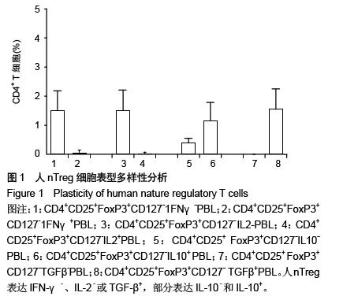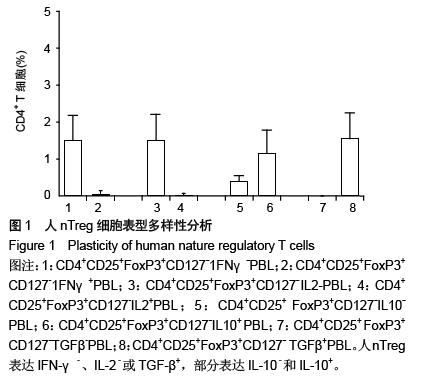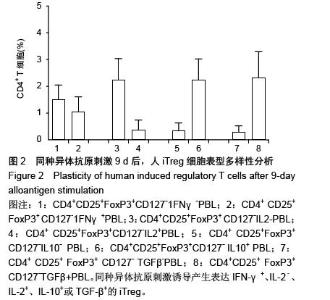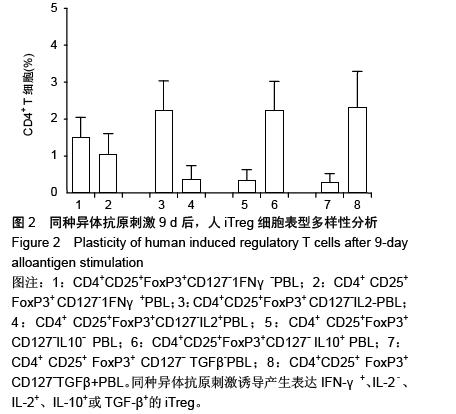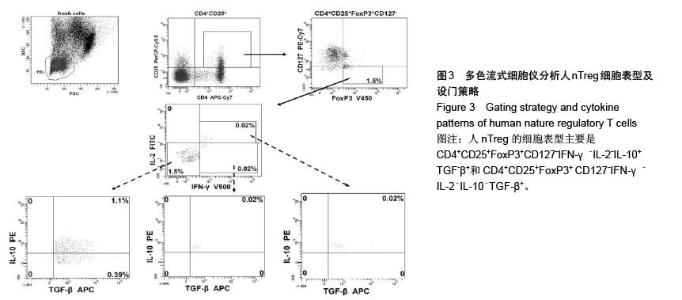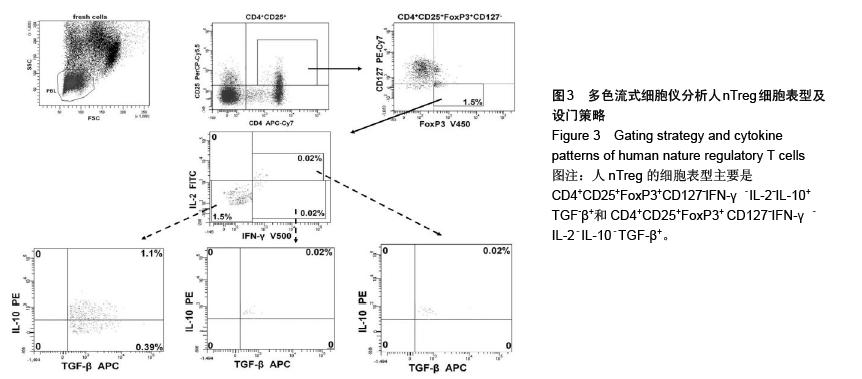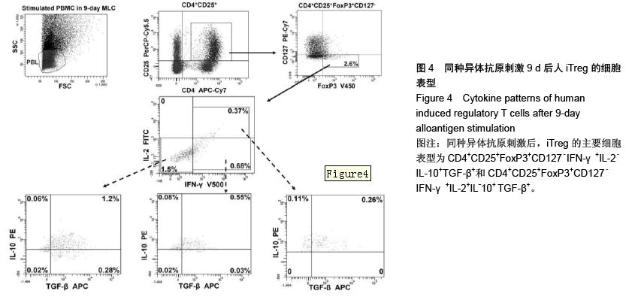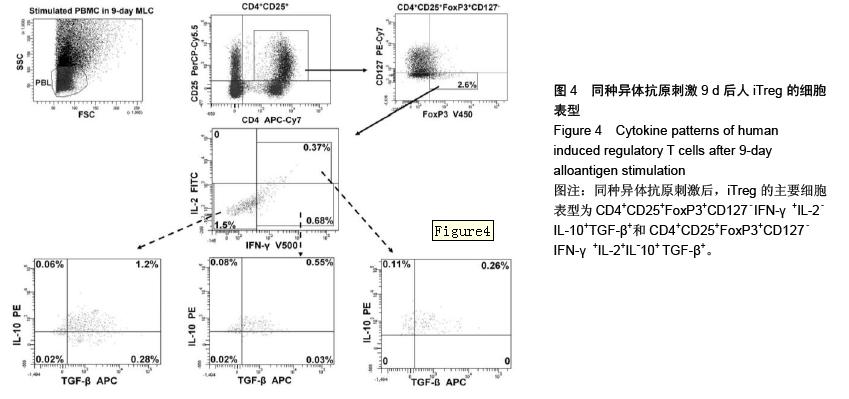| [1] Sakaguchi S, Miyara M, Costantino CM.et al.FOXP3+ regulatory T cells in the human immune system. Nat Rev Immunol.2010;10(7):490-500.
[2] Sakaguchi S, Powrie F.Emerging challenges in regulatory T cell function and biology. Science.2007;317(5838):627-629.
[3] Sakaguchi S, Wing K, Yamaguchi T.Dynamics of peripheral tolerance and immune regulation mediated by Treg.Eur J Immunol.2009;39(9):2331-2336.
[4] Jones E, Dahm-Vicker M, Golgher D,et al.CD25+ regulatory T cells and tumor immunity. Immunol Lett.2003;85(2):141-143.
[5] Adeegbe D, Bayer AL, Levy RB,et al.Cutting edge: allogeneic CD4+CD25+Foxp3+ T regulatory cells suppress autoimmunity while establishing transplantation tolerance. J Immunol.2006;176(12):7149-7153.
[6] Bluestone JA, Abbas AK. Natural versus adaptive regulatory T cells. Nat Rev Immunol.2003;3(3):253-257.
[7] Cassis L, Aiello S, Noris M.Natural versus adaptive regulatory T cells. Contrib Nephrol.2005;146:121-131.
[8] Sakaguchi S. The origin of FOXP3-expressing CD4+ regulatory T cells: thymus or periphery. J Clin Invest. 2003; 112(9):1310-1312.
[9] Sakaguchi S, Sakaguchi N, Asano M,et al.Immunologic self-tolerance maintained by activated T cells expressing IL-2 receptor alpha-chains (CD25). Breakdown of a single mechanism of self-tolerance causes various autoimmune diseases. J Immunol.1995;155(3):1151-1164.
[10] Baecher-Allan C, Brown JA, Freeman GJ,et al.CD4+CD25 high regulatory cells in human peripheral blood. J Immunol. 2001;167(3):1245-1253.
[11] Hori S, Nomura T, Sakaguchi S.Control of regulatory T cell development by the transcription factor Foxp3. Science. 2003;299(5609):1057-1061.
[12] Fontenot JD, Gavin MA, Rudensky AY.Foxp3 programs the development and function of CD4+CD25+ regulatory T cells. Nat Immunol.2003;4(4):330-336.
[13] Khattri R, Cox T, Yasayko SA,et al.An essential role for Scurfin in CD4+CD25+ T regulatory cells. Nat Immunol. 2003; 4(4):337-342.
[14] Gambineri E, Torgerson TR, Ochs HD.Immune dysregulation, polyendocrinopathy, enteropathy, and X-linked inheritance (IPEX), a syndrome of systemic autoimmunity caused by mutations of FOXP3, a critical regulator of T-cell homeostasis. Curr Opin Rheumatol.2003; 15(4):430-435.
[15] Bennett CL, Christie J, Ramsdell F,et al.The immune dysregulation, polyendocrinopathy, enteropathy, X-linked syndrome (IPEX) is caused by mutations of FOXP3. Nat Genet.2001;27(1):20-21.
[16] Liu W1, Putnam AL, Xu-Yu Z,et al.CD127 expression inversely correlates with FoxP3 and suppressive function of human CD4+ T reg cells.J Exp Med.2006;203(7):1701-1711.
[17] Sanchez-Lockhart M, Marin E, Graf B,et al.Cutting edge: CD28-mediated transcriptional and posttranscriptional regulation of IL-2 expression are controlled through different signaling pathways. J Immunol.2004; 173(12):7120-7124.
[18] Thornton AM, Donovan EE, Piccirillo CA,et al.Cutting edge: IL-2 is critically required for the in vitro activation of CD4+CD25+ T cell suppressor function. J Immunol.2004;172(11):6519-6523.
[19] Wu H, Li P, Shao N,et al.Aberrant expression of Treg-associated cytokine IL-35 along with IL-10 and TGF-beta in acute myeloid leukemia. Oncol Lett.2012;3(5):1119-1123.
[20] Daniel V, Naujokat C, Sadeghi M,et al.Observational support for an immunoregulatory role of CD3+CD4+CD25+IFN-gamma+ blood lymphocytes in kidney transplant recipients with good long-term graft outcome. Transpl Int.2008;21(7):646-660.
[21] Daniel V, Sadeghi M, Wang H,et al.CD4+CD25+Foxp3+ IFN-gamma+ human induced T regulatory cells are induced by interferon-gamma and suppress alloresponses nonspecifically. Hum Immunol.2011; 72(9):699-707.
[22] 王海灏,仰霈雯,雷家慧.两种多克隆刺激条件下人诱导性Treg表型的多样性变化[J]. 中国免疫学杂志,2012, 28(9):769-774.
[23] Roussel M, Davis BH, Fest T,et al.Toward a reference method for leukocyte differential counts in blood: Comparison of three flow cytometric candidate methods. Cytometry A. 2012;81(11): 973-982.
[24] Gill N, Chenoweth MJ, Verdu EF,et al.NK cells require type I IFN receptor for antiviral responses during genital HSV-2 infection. Cell Immunol.2011;269(1):29-37.
[25] Daniel V, Sadeghi M, Wang H,et al.CD4(+)CD25(+)Foxp3(+) IFNgamma(+) Treg are immunosuppressive in vitro and increase with intensity of the alloresponse in pretransplant MLC. Transpl Immunol. 2012;27(2-3):114-121.
[26] Daniel V, sadeghi M, Wang H,et al.In-vitro inhibition of IFNgamma+ iTreg mediated by monoclonal antibodies against cell surface determinants essential for iTreg function. BMC Immunol.2012;13(1):47. |
